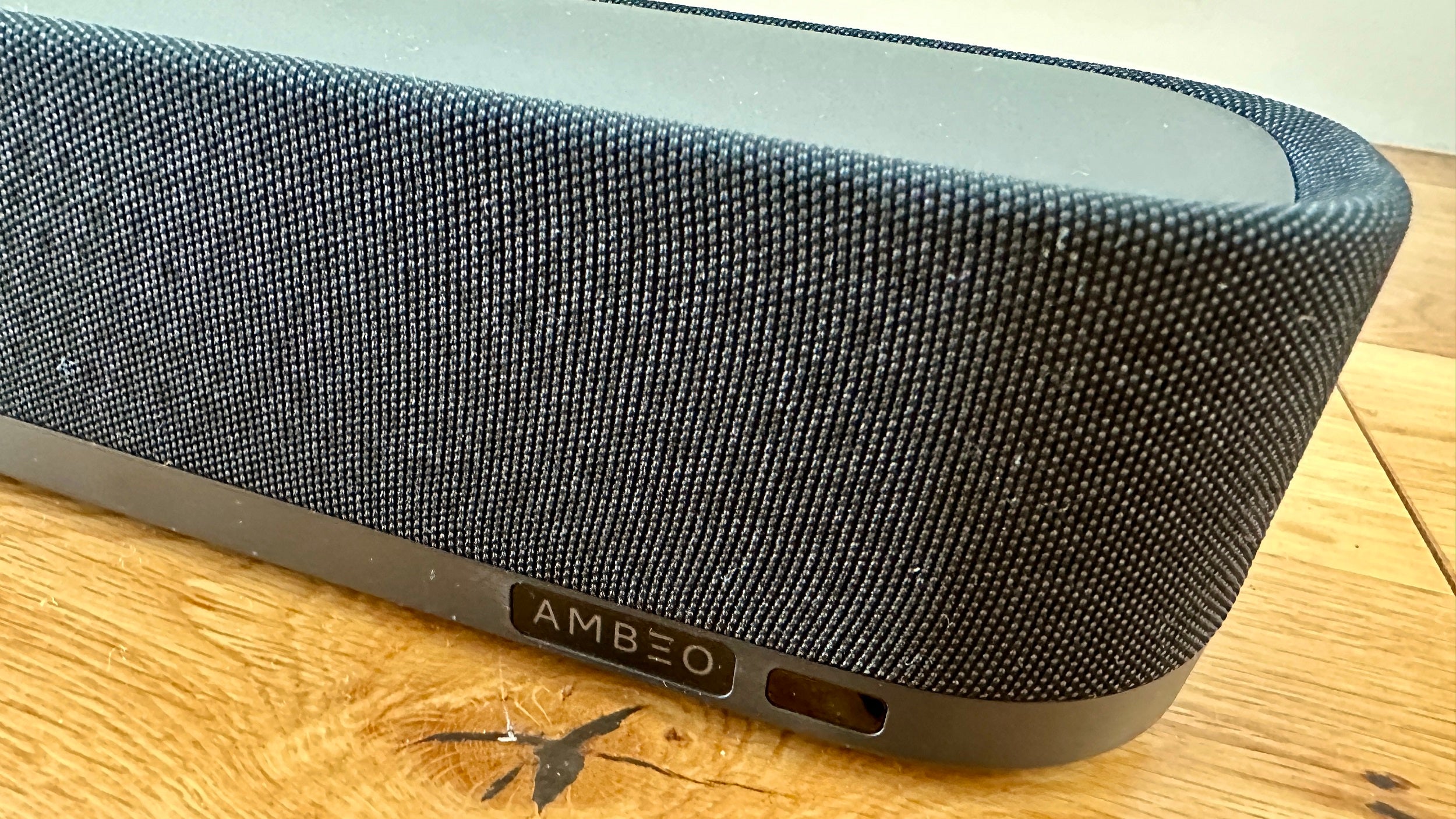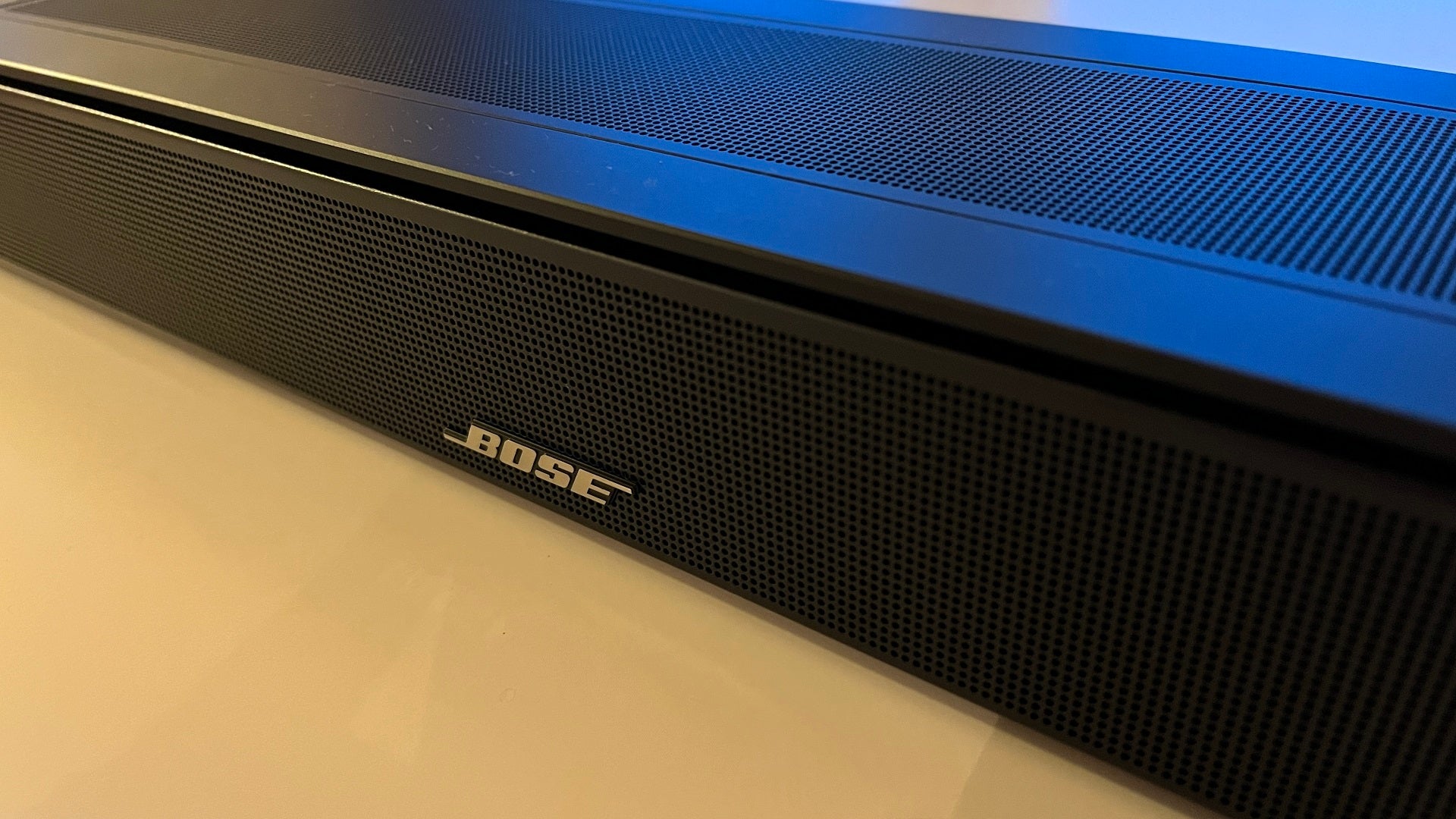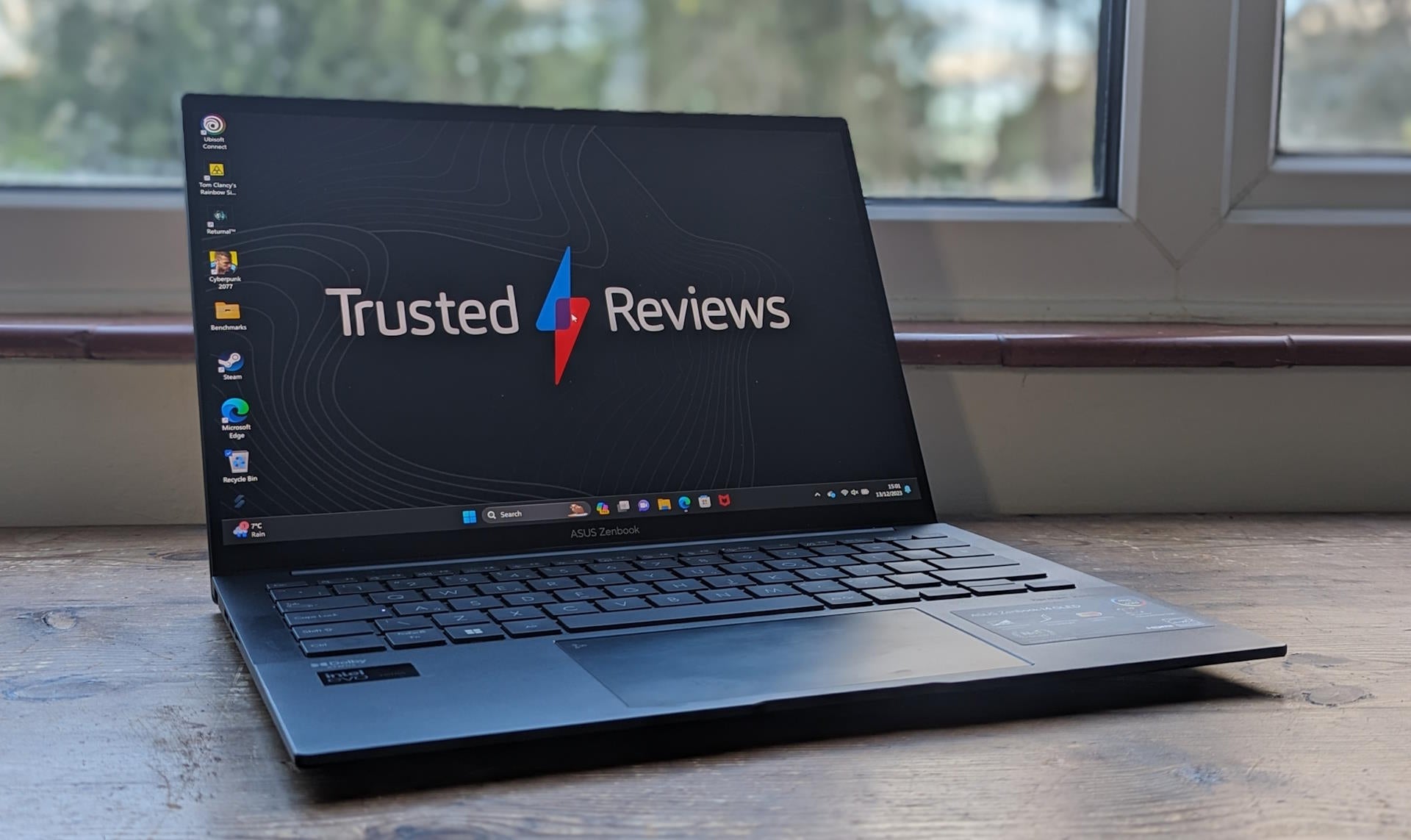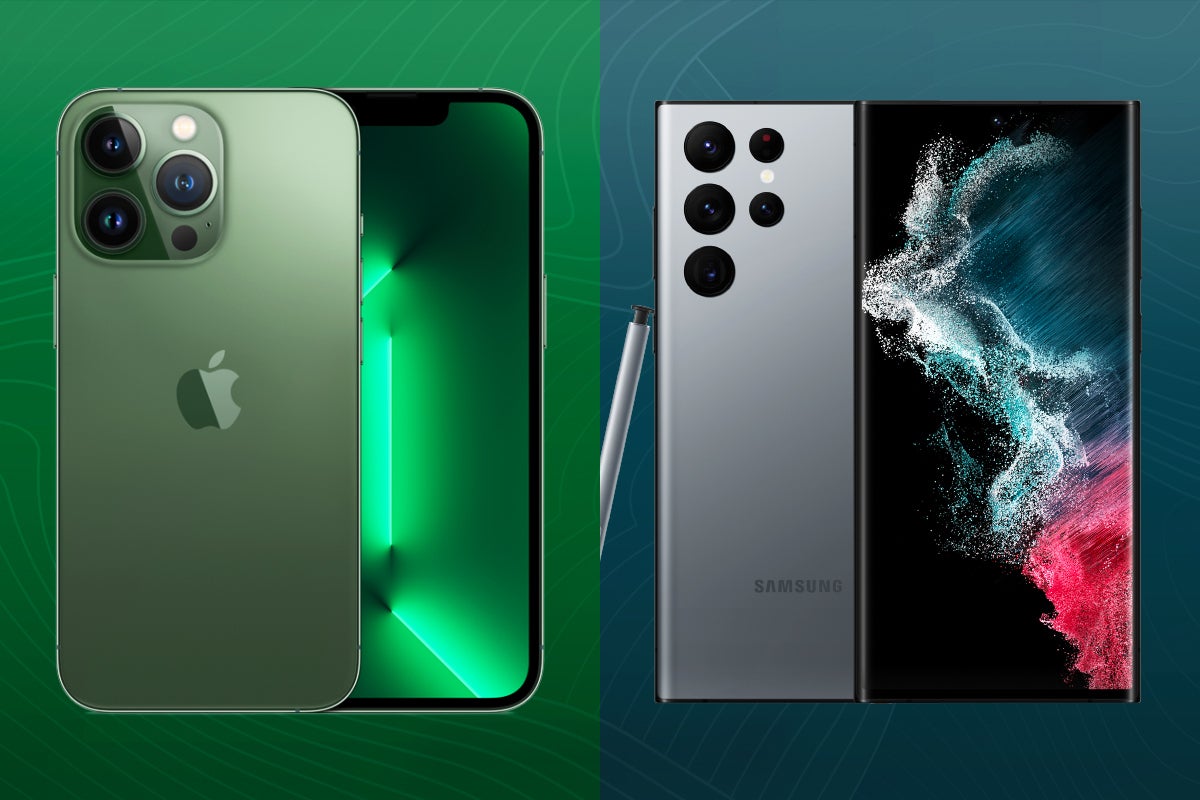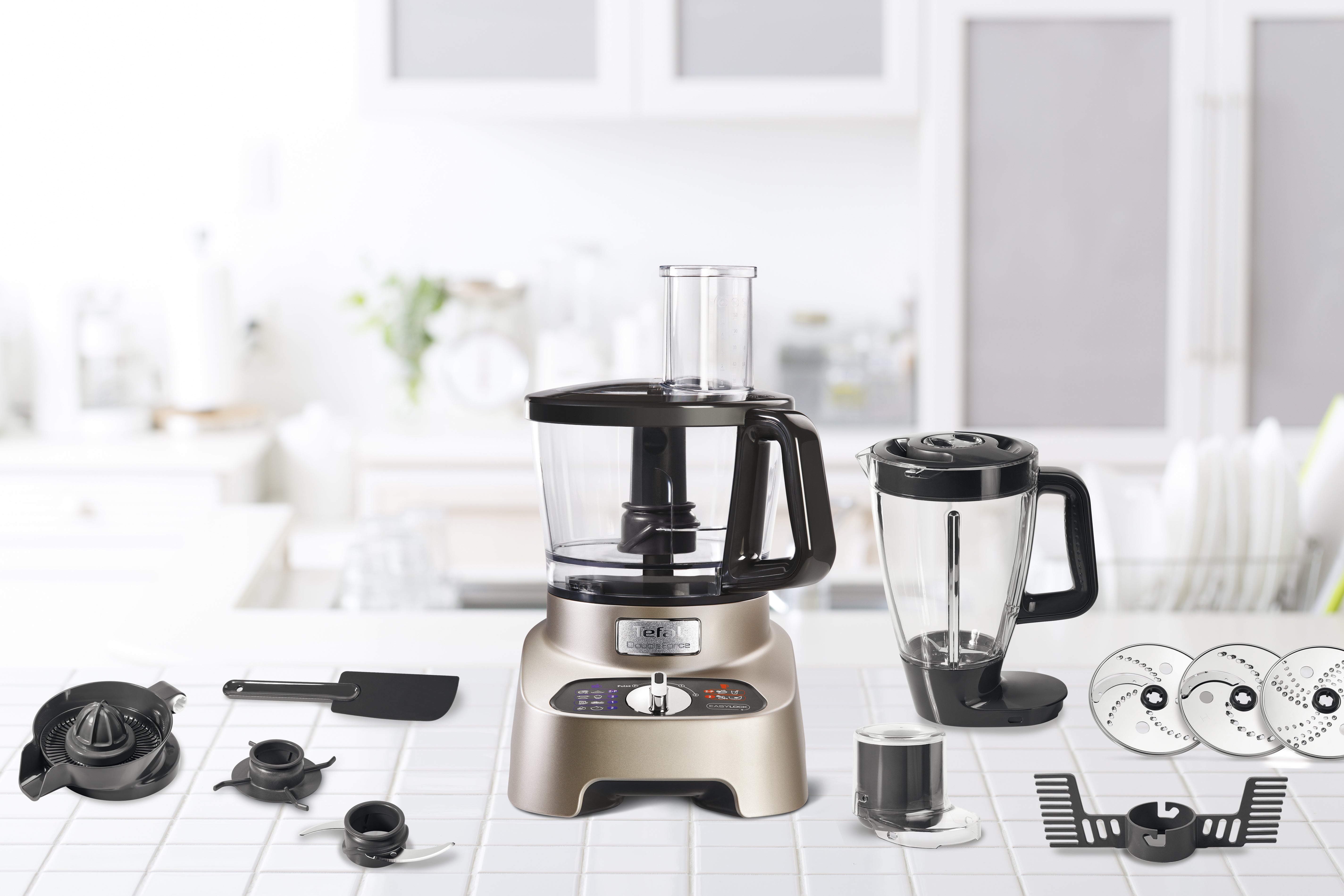Best Soundbar 2024: Upgrade your TV audio

If you’re feeling slightly underwhelmed by your TV’s sound output, you aren’t alone. Most flatscreens these days don’t have room for beefy audio components, causing the audio to fall flat.
Thankfully, there’s a simple solution. A soundbar is an easy way to improve the size and quality of your TV audio without investing in a huge surround sound system for that home cinema sound.
We look at a range of criteria when reviewing a soundbar, including the size and design of the soundbar, the controls and ease of use, and any additional features or audio presets onboard.
Of course, we also examine the audio quality, listening to different movies, games and music to determine how the soundbar handles key factors such as bass and dialogue. Finally, we crank the volume as high as possible to hear how loud the audio can be pushed before succumbing to distortion.
We’ve gathered a range of soundbars for different budgets, scenarios and features in this guide. Key categories include our favourite high-end soundbar, the best affordable Dolby Atmos soundbar, the best small soundbar and our top pick for a gaming soundbar.
Keep reading to discover a list of our best soundbars at a glance or scroll down for a summary of each soundbar, along with pros, cons, and links to our full, in-depth reviews with comparisons to even more great soundbars on the market.
If you’re looking for something more specific, we’ve got you covered there, too. Don’t forget to visit our guides to the best Dolby Atmos soundbars, the best small soundbars and the best cheap soundbars. Those interested in going beyond a soundbar will also want to check out our guide to the best surround sound systems.
Best soundbar at a glance
- Best soundbar: Sennheiser Ambeo Soundbar Max – check price
- Best high-end soundbar: Bang & Olufsen Beosound Theatre – check price
- Best affordable Dolby Atmos soundbar: Samsung HW-Q700B – check price
- Best affordable soundbar: Wharfedale Vista 200S – check price
- Best soundbar for movies and music: Sony HT-A700 – check price
- Best Atmos soundbar for less than £1000: Sonos Arc – check price
- Best small soundbar: Sonos Beam Gen 2 – check price
- Best gaming soundbar: Razer Leviathan V2 – check price
- Best soundbar system: Samsung HW-Q990C – check price
- Best one-box soundbar: Sennheiser Ambeo Soundbar Plus – check price
How we test
Soundbars were created to boost TV sound quality – which means we end up watching a lot of TV. We play everything – news reports for voices, movies for scale and effects steering – to ensure that the soundbars that come through the doors at Trusted Reviews are given a proper challenge. We’ll play different genres of music, too, since a good soundbar should be capable of doubling-up as a great music system.
More complex soundbars feature network functionality for hooking up to other speakers and playing music around the home, so we test for connectivity issues and ease of use. We cover the spectrum of models available, everything from cheap soundbars costing less than £100 to those over £1000, to ensure our reviews benefit from our extensive market knowledge. Every product is compared to similarly priced rivals, too.
 Best soundbar
Best soundbar
- Superb 3D audio performance
- As good with music as it is movies
- Eye-wateringly expensive
- Big and not exactly pretty
 Best affordable soundbar
Best affordable soundbar
- Great with movies and music
- Well-integrated bass
- Low-profile and well-made cabinet
- Exceptional value
- Easy to setup
- Nothing at this price
 Best soundbar for movies and music
Best soundbar for movies and music
- Well-featured
- Excellent sonic performance
- Strong bass for a single bar
- Terrific music performance
- Needs plenty of space
- Adding subwoofer and rear channels is expensive
- Standalone bar is pricey
 Best Atmos soundbar under £1000
Best Atmos soundbar under £1000
- Expansive, well-defined and invigorating sound
- Good impression of audio height and width
- Fine spec
- Ample control options
- Slightly bumpy frequency response
- Some treble stridency
- No MQA support
 Best small soundbar
Best small soundbar
- Clean and balanced sound
- Upgradeable
- Excellent size
- Amazon Alexa and Google Assistant support
- HDMI eARC input only
- Limited DTS support
 Best gaming soundbar
Best gaming soundbar
- Great bass
- Customisable RGB lighting
- Razer Synapse companion app
- Full and warm sound during music and gaming
- Subwoofer too large for a desk
- Lack of ports
- Bluetooth audio is less reliable
 Best high-end soundbar
Best high-end soundbar
- Stunning design
- Huge soundstage
- Profound bass performance
- Generous connectivity
- You’ll need to add B&O rears for cinematic immersion
- Unconvincing gaming
- Horrendously expensive
 Best affordable Atmos soundbar
Best affordable Atmos soundbar
- Crisp, entertaining presentation
- HDMI input for local sources
- Extra features for Samsung TV owners
- No sense of deep Atmos immersion
- Front LED often difficult to read
- Prosaic design
 Best soundbar system
Best soundbar system
- Outstandingly powerful
- Peerless Dolby Atmos staging
- Dolby Vision and HDR10+ pass through
- Expensive for a soundbar
- No 4K/120Hz passthrough
- Subwoofer occasionally struggles with music
 Best one-box soundbar
Best one-box soundbar
- Ambeo virtualisation
- Excellent dynamics
- Two HDMI inputs
- No 4K/120Hz pass-through
- Expensive
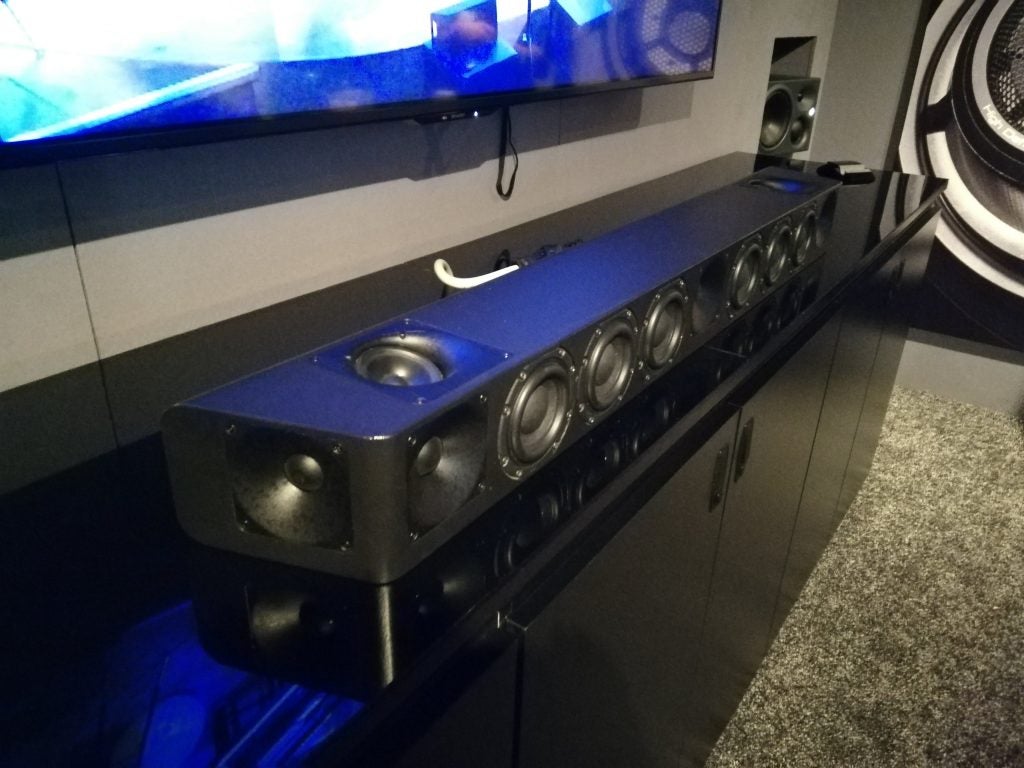
Sennheiser Ambeo Soundbar Max
Best overall soundbar
Pros
- Superb 3D audio performance
- As good with music as it is movies
Cons
- Eye-wateringly expensive
- Big and not exactly pretty
We rate the Sennheiser Ambeo Soundbar Max as the best soundbar you can buy today, but it is a lot of soundbar for a lot of money – $2199 / £2199 to be exact.
The Ambeo is a large unit, over a metre long and weighing 18.5kg, it’s not one that will easily sit beneath a telly unless the TV is wall-mounted. The similarly priced Devialet Dione tips the scales at 12kg, and we considered that to be fairly heavy. The Ambeo is heavier than some OLED TVs on their own.
Which means it needs a fair amount of space but for its size and heft the build quality is excellent with a good selection of inputs that includes three HDMI ports, digital optical out and aux-in. Wirelessly there is support for Google Chromecast and Bluetooth 4.2.
The Ambeo Soundbar is an all-in-one effort, and one of a few we’ve tested that lives up to its claims of offering 5.1.4 channel immersive sound. It sounds absolutely sensational, firing effects around a room and generating power and muscle to make films and TV shows sound their exciting best. We found there to be a substantial level of bass for a single-bar system, with a good level of extension to the low end and in addition, plenty of depth and nuance to the soundstage it creates. But you’ll want to make sure the Ambeo processing is switched on, as we found the bar’s performance lost a sense of depth and height with it off.
There’s Dolby Atmos, DTS:X, and the less well known MPEG-H are the main audio formats supported. To calibrate the Ambeo’s performance, it has a high-quality calibration microphone that matches the profile of the soundbar’s sound to a room, although it can only perform this from a single listening point. That means you want to be sitting in the right place at all times for the best experience possible.
There’s competition from the Bang & Olufsen Beosound Theatre, but that’s even more expensive at nearly £6,000. If the size of the Ambeo Max is off-putting, there is the smaller (and less expensive) Ambeo Soundbar Plus for £1299 / $1299.
Reviewer: Steve May
Full Review: Sennheiser Ambeo Soundbar Max

Samsung HW-Q990C
Best soundbar system
Pros
- Outstandingly powerful
- Peerless Dolby Atmos staging
- Dolby Vision and HDR10+ pass through
Cons
- Expensive for a soundbar
- No 4K/120Hz passthrough
- Subwoofer occasionally struggles with music
Having not too long ago reviewed the HW-Q990B, we’ve now had a look at Samsung’s brand new soundbar system in the HW-Q990C. It’s another belter of a wireless home cinema system, though if you’re expecting massive upgrades on the previous iteration you may feel a tinge of disappointment.
That sense of disappointment wasn’t the sensation our reviewer was left feeling after auditioning the Q990C. While there’s no increase in channel count over the Q990B, sticking at a still numerous 11.1.4 channels, it’s a decision that makes sense to us given it’s more than enough to creative that large, enveloping hemisphere of sound for Dolby Atmos and DTS:X soundtracks.
As ever, a particular highlight of Samsung’s latest soundbar system is the power and dynamism of its speakers. In our opinion, no other soundbar system delivers with as much intensity, impact and ‘bite’, with a dynamic range that adds to the excitement of the visuals on screen.
The ‘Acoustic Lens’ subwoofer continues to deliver some of the deepest rumbles we’ve come across in the soundbar world, a nimble woofer that’s able to dig deep and hardly ever sounding compressed at low frequencies. The rear speakers offer a fantastic sense of detail, helping to create a soundstage that’s outstandingly cohesive and balanced; positioning effects accurately around the soundstage whether they be overhead, in front of the viewer or to the sides.
The Q990C is better with music than the Q990B, though we found it was dependent on where we placed the subwoofer. There’s a much better balance and integration of low frequencies to be found when placed closer to the main unit, avoiding the muddy sound of before, especially in the bar’s Adaptive Sound mode.
There are a few upgrades on the feature side, with the inclusion of the SmartThings Hub to the SmartThings app control if you want to connect the soundbar to other ‘smart’ products in the home. The Adaptive Sound mode has been upgraded, doing a better job of identifying voices at lower volume levels. Also new is the improved auto-calibration tools to set-up the speaker’s performance for your room.
There’s support for the third-gen version of Samsung’s Q-Symphony technology that combines the soundbar’s drivers with that of a Samsung TV’s speakers to create a bigger sound that places effects where they’re meant to be onscreen. Alexa voice recognition is built-in, and for iOS users there’s AirPlay 2 to cast audio to the soundbar.
The design and connectivity options are essentially the same as before, with the only real change being the colour is a lighter shade of black. Connections include two HMI inputs and a single optical audio input, with the HDMI input able to pass through HDR10+ and Dolby Vision formats. There’s still no support for 4K/120Hz pass-through that some games do support.
The Samsung HW-Q990C enters the market at £1599 / $1599, which is now nearly double the price of the Q990B. If you’re looking to save money, the Q990B would be the model to go for, but if you’re upgrading from an older soundbar system, we’d recommend a closer inspection of the HW-Q990C.
Reviewer: John Archer
Full Review: Samsung HW-Q990C

Sennheiser Ambeo Soundbar Plus
Best one-box soundbar
Pros
- Ambeo virtualisation
- Excellent dynamics
- Two HDMI inputs
Cons
- No 4K/120Hz pass-through
- Expensive
The original Ambeo soundbar was a behemoth, a soundbar so big it would take up a third of the TV screen when sat in front of it. The Ambeo Soundbar Plus takes everything we liked about the Ambeo Max, and puts it into a much more friendly form factor.
It’s still a fairly long soundbar and as such is best paired with 65-inch TVs and larger. Our reviewer felt the design and build quality was excellent, the Ambeo Plus looks smart without necessarily hogging the attention from what’s on screen. It comes with two HDMI inputs to pass-through audio/HDR, but for a soundbar priced as much as it is, we were disappointed that there was no support for gaming features such as 4K/120Hz.
The system is described as a 7.1.4 system, with upfiring and side-firing speakers to create a wide and spacious presentation. The sound quality we found to be very impressive, dynamic, musical, and detail rich, it is reminiscent of the bigger Ambeo Max. Bass is surprisingly powerful for a one-box system, and the Ambeo processing really does expand the soundstage and place effects from the left, right, centre and above in convincing fashion.
Bass can be increased with support for an additional four Ambeo subwoofers, but bass here digs deep and with punch for a cinematic performance. With music it’s also capable, converting stereo tracks with width and plenty of nuance. There’s no provision to add surround speakers to this unit, so it is a very front-heavy presentation.
In terms of features the Ambeo Plus supports the immersive formats such as Atmos, DTS:X, 360 Reality Audio, and MPEG-H. You can also stream over AirPlay, Spotify Connect, Tidal Connect, Chromecast, and Bluetooth, giving the user plenty of ways to play audio. There’s also Amazon Alexa built-in for those who want to place the soundbar within a smart system.
The price is on the high side at £1299 / $1299, more than the Sony HT-A7000, Sonos Arc, and Bowers & Wilkins Panorama 3 but in our minds it’s as good, if not better than all of them in terms of delivering cinematic scale to movies and TV.
Reviewer: Steve May
Full Review: Sennheiser Ambeo Soundbar Plus

Bang and Olufsen Beosound Theatre
Best high-end soundbar
Pros
- Stunning design
- Huge soundstage
- Profound bass performance
- Generous connectivity
Cons
- You’ll need to add B&O rears for cinematic immersion
- Unconvincing gaming
- Horrendously expensive
When it comes to extravagant products there are few better than Bang & Olufsen, and with their supporting Beosound Theatre, they’ve attempted to create an Atmos bar with no compromises.
And in our view they’ve succeeded. There are still constraints and limitations given that the Beosound Theatre is a one-box system that still needs rear speakers to create the enveloping effect of Dolby Atmos immersive sound, meaning the soundstage is front-heavy. It doesn’t have the same reach and wraparound effect the Sennheiser Ambeo Soundbar Max can produce with its digital processing.
But the bass performance is thunderous for any one-box sound system. Our reviewer commented the Theatre was the most dynamic sounding soundbar they had ever heard. The energy and drive it gives soundtracks is excellent, and it seamlessly blends midrange and sub-bass frequencies with confidence. Dialogue clarity is excellent, and the soundbar is particularly good at delivering music. While it’s a excellent bar for movies and music, with games it’s weak at localising effects within the soundstage, making it tougher to figure out what’s around you.
DTS:X isn’t supported, which is a disappointment, but there are plenty of ways to send audio wirelessly to the bar through Chromecast, AirPlay 2 and Spotify Connect, with app support that allows the EQ to be adjusted and audio modes to enable. The bar is also able to measure your listening space and optimise its performance for the best possible sound.
The design is certainly not understated, with the Beosound Theatre primarily built to integrate with LG C2 OLED but can be partnered with any other TV. The width of the bar can be adjusted to match the size of the screen, with a modular design that allows it to be upgraded over time. And around the back is a generous array of connections with four HDMI ports, including one that supports 4K/120Hz frame rates.
The Beosound Theatre is eye-wateringly expensive at £5590 / $6890 but it is a class-leading effort in terms of build quality and design, offering up a superb sonic performance.
Reviewer: Steve May
Full Review: Bang & Olufsen Beosound Theatre

Samsung HW-Q700B
Best affordable Atmos soundbar and subwoofer
Pros
- Crisp, entertaining presentation
- HDMI input for local sources
- Extra features for Samsung TV owners
Cons
- No sense of deep Atmos immersion
- Front LED often difficult to read
- Prosaic design
Samsung’s soundbar line-up acts as a perfect complement to their TVs, and the HW-Q700B strikes an impressive balance between performance and value at its $699 / £699 asking price.
Much like the step-up HW-Q800B, it’s both Dolby Atmos and DTS:X compatible and features an HDMI input that supports 4K HDR passthrough if you’ve run out of inputs on your TV. Samsung exclusive features include Q Symphony, which allows the soundbar to work in tandem with the TV’s speakers for a bigger soundstage. Our reviewer very much enjoyed its implementation on this bar.
It features several other ways to fire audio at it including AirPlay 2 for iOS users, Bluetooth support and Spotify Connect integration through Samsung’s SmartThings app that corrals other smart home devices to speak to each other. There’s also voice support in Google Assistant and Amazon Alexa.
It’s the performance that we’re here for, and this 3.1.2 channel effort has several appealing traits. Our reviewer found dialogue clarity to be excellent, making it easy to follow what’s been said when the action on screen gets busy. The upfiring height drivers perform a great job of expanding the soundfield with a film like The Gray Man, the sense of ambient space makes the action feel more believable.
The crossover point between the main unit and the subwoofer is smoothly done, and the sub itself puts in a punchy, hard-hitting performance with low frequencies to create plenty of impact. Bass delivery isn’t necessarily full of depth, but it is effective. The issue we would point out is that the Q700B is a front-heavy soundstage, with no rear speakers to create the enveloping soundscape needed for true Atmos and DTS:X soundtracks. It does, however, support Samsung’s rear speaker package if you choose to go down that path.
The HW-Q700B is a soundbar for larger screens, those with smaller TVs may want to look at the Sonos Beam Gen 2 or Bose Smart Soundbar 600 as similarly priced alternatives, though both those models do not come with a subwoofer included.
Reviewer: Steve May
Full Review: Samsung HW-Q700B

Wharfedale Vista 200S
Best affordable soundbar
Pros
- Great with movies and music
- Well-integrated bass
- Low-profile and well-made cabinet
- Exceptional value
- Easy to setup
Cons
- Nothing at this price
If the expense of a soundbar like the Sennheiser Ambeo Max causes your eyes to water, the presence of an affordable soundbar with a dedicated subwoofer might be more attractive. In that case the Wharfedale Vista 200S is a highly recommended option.
We found the bar’s design to be attractive in appearance and the construction durable. The black finish and glossy top surface doesn’t scream a cheap soundbar despite the Vista 200S’s affordable price. With a width of 900mm it’s tailored to partner televisions up to 65-inches in size, and that it boasts a slim for factor also means you won’t be living in fear of the soundbar blocking the picture.
In terms of features, we observed there wasn’t much to grapple with aside from its active wireless subwoofer that has a side-firing 165mm driver with 60W of power. If you want wireless connectivity or immersive audio, you’d be better off seeking the smaller but more expensive Sonos Beam Gen 2. We did note the three preset EQ settings for media playback are provided in Movies, Music and News to optimise the soundbar’s sound for those types of content.
We found the sound quality for the price was especially good, with the 200S putting in a great performance across the frequency range with a top-end that didn’t suffer from a lack of detail, plus some punchy bass thanks to the active subwoofer. We also observed that the Vista 200S could get rather loud without sounding harsh or compressed due to its 120W of built-in amplification. It also dealt with dialogue well, even without a dedicated centre speaker, and if you’re interested in playing music through this bar, then it delivers on a smooth and clear performance.
There are cheaper soundbars, such as the Sharp HT-SBW202, as an alternative but we haven’t come across another soundbar that offers as much performance-per-pound at this price the Wharfedale.
Reviewer: Steve Withers
Full reviews: Wharfedale Vista 200S

Sony HT-A7000
Best soundbar for movies and music
Pros
- Well-featured
- Excellent sonic performance
- Strong bass for a single bar
- Terrific music performance
Cons
- Needs plenty of space
- Adding subwoofer and rear channels is expensive
- Standalone bar is pricey
If you’re in the market for a soundbar that’s great with movies and music, we suggest you give the Sony HT-A7000 a closer look.
During testing, we found its audio delivery to be crisp and concise, with clear voices and especially powerful bass for a single-bar unit. Its 7.1.2 channel Dolby Atmos and DTS:X performance impressed too, with a great sense of height that makes for a more immersive performance than a ‘standard’ soundbar. Its claims of virtual surround sound weren’t too convincing, but this is likely down to needing a room with walls nearby to bounce sounds off to the listening position (which we didn’t have in our set-up).
The HT-A7000 is also an excellent performer for music showcasing great tonality, depicting the mid-range naturally, along with sharp highs and punchy bass. We would say it performs better with music in its Cinema mode, eliciting a smoother vocal performance.
There is an upgrade path with the ability to add rear speakers and a subwoofer, but this doesn’t come at a particularly affordable price, taking the total cost past $2000 / £2000. You at least get plenty of bang for buck for features, with various options of playing audio through the system be it wired or wireless. There is Chromecast, AirPlay 2, Bluetooth 5 and Spotify Connect, and support for Hi-Res Audio with DSD and the wireless LDAC format.
There’s Sony’s 360 Reality Audio format that can play tracks in 3D audio from music streaming services such as Tidal and Deezer. Smart assistance is possible with both Alexa and Google assistant, but a separate compatible device is needed to enable hands-free control.
Its design is rather out there, with a reflective glass top surface and different combination of materials that may make it marmite for some (we rather liked it). It is also a large soundbar, wider than the Sennheiser Ambeo Soundbar Max though thankfully not as tall, so it can fit beneath most TVs.
You’d really want to pair with a TV 55-inches or bigger to get the most impact. Sony has launched a cheaper version in the HT-A5000 that supports a similar feature set but at half the price.
Reviewer: Kob Monney
Full review: Sony HT-A7000

Sonos Arc
Best Atmos soundbar under £1000
Pros
- Expansive, well-defined and invigorating sound
- Good impression of audio height and width
- Fine spec
- Ample control options
Cons
- Slightly bumpy frequency response
- Some treble stridency
- No MQA support
While the Sonos Arc is not exactly cheap, its range of connectivity, streaming support and upfiring speakers make it one of the outstanding options below £1000.
The Arc represented the first time Sonos waded into the Dolby Atmos waters and we found the bar’s soundstage was full of plenty of height and width in testing, putting in a crisp performance with good control of the top end, alongside a detailed presentation of the mid-range and low-end.
Our reviewer found the transition between mid-range and low-end was not the most fluid, hampering the overall cohesion of the Arc’s presentation. It plays music well, although again the blend of bass and mid-range did cause it to lack conviction at times. The lack of bass is an issue that hampers several Atmos single-bars such as the Bowers & Wilkins Panorama 3, but at least with the Arc a subwoofer can be added. With the Era 300 available a full Dolby Atmos home cinema system can be created if that’s of interest.
The Arc features HDMI eARC, which means you’ll need a TV with an eARC port to wring the best possible Atmos performance. Wirelessly there’s AirPlay 2 (Sonos still omits Bluetooth from its spec), and in the S2 app there’s the ability to place the Arc within a multi-room system with other Sonos speakers. The S2 app also provides access to streaming services in Spotify, Tidal, Deezer, Qobuz as well as the Sonos Radio service. Those with an iOS device can take advantage of the Trueplay feature that optimises audio playback to any room.
Design wise, the Arc is is keeping with Sonos’ recent design language, its minimalistic look available in black or white. It’s over a metre long but quite discreet in profile. The Arc is a very good Dolby Atmos soundbar but not without limitations, and its lack of all-round DTS support means this isn’t the best choice for home cinema enthusiasts with older DVDs and Blu-rays with DTS soundtracks. If you’re in need of DTS support, we’d recommend with the Sony HT-A7000 or the Sennheiser Ambeo Plus as an alternative.
Reviewer: Simon Lucas
Full review: Sonos Arc

Sonos Beam (Gen 2)
Best small soundbar
Pros
- Clean and balanced sound
- Upgradeable
- Excellent size
- Amazon Alexa and Google Assistant support
Cons
- HDMI eARC input only
- Limited DTS support
For those with limited space or a smaller TV, the Sonos Beam (Gen 2) is one of the best soundbar available in its size.
The Beam (Gen 2) measures 26-inches in width and just shy of 3-inches in height. For reference, our best overall soundbar, the Sennheiser Ambeo Soundbar Max is almost twice that size. This makes the Beam ideal for small TVs, with any up to 49-inches in size a suitable fit.
Similar to the Gen 1 Beam, the Gen 2 is equipped with a tweeter, four mid-woofers and three passive radiators. It has none of the upward-firing speakers for the overhead channels for Dolby Atmos found on the Sonos Arc. Instead, the Beam uses digital processing to create an immersive experience.
Unlike the original, the Beam (Gen 2) features HDMI eARC, which offers higher bandwidth and support for lossless audio formats such as Atmos.
There are a number of sound modes to choose from including a night mode to cut out loud noises in the evenings and a speech enhancement mode to boost dialogue. The soundbar also supports voice commands with Amazon Alexa and Google Assistant.
When it comes to sound quality, we found the Sonos Beam (Gen 2) performs with excellent balance and range. It doesn’t have the dimensionality of the Sonos Arc, but it positions sound in a way that it feels as though it’s wrapping around you. Our reviewer also felt that bass levels impressed, though they don’t have the same weight and depth as those produced by the larger Arc.
Nevertheless, the Beam manages to deliver a good sense of cinematics, a clean and balanced sound and thus remains the best choice for smaller TVs and rooms, just beating out the likes of the similarly priced Bose Smart Soundbar 600 and Denon Home 550 Soundbar, and is a cheaper option than the Sennheiser Ambeo Mini.
Reviewer: David Ludlow
Full review: Sonos Beam Gen 2

Razer Leviathan V2
Best gaming soundbar
Pros
- Great bass
- Customisable RGB lighting
- Razer Synapse companion app
- Full and warm sound during music and gaming
Cons
- Subwoofer too large for a desk
- Lack of ports
- Bluetooth audio is less reliable
The Razer Leviathan V2 is a soundbar designed for gamers, intended to amp up gaming sessions with a bar and subwoofer combo. At $249.99 / £229.99, it’s within the affordable realm of the soundbar market, and a worthwhile option not just for gaming, but also with music too.
The appearance of the Leviathan V2 is toned down compared to some of Razer’s other products, although the RGB lighting scheme can summoned and customised to fit the environment, bringing a cascade of colour to gaming sessions. We found the build quality to be sturdy enough, despite being predominantly made from plastic, with feet that can angle the soundbar upwards to fire audio towards the listening position.
There is no HDMI port, just a USB audio input to connect to a PC, and wirelessly there’s Bluetooth 5.2 if you want to connect the Leviathan V2 to a device other than a PC and play audio through the bar. It’s a simple enough state of connections, though we found it to be a little disappointing that there’s no 3.5mm despite its predecessor including it. The Razer Audio app features EQ presets such as Bass Boost to help customise the sound to match the game being played.
And in terms of the sound, our reviewer enjoyed the warm, punchy bass of the soundbar/subwoofer combo, with the spacious soundstage helping to identify where enemies where, plus the sound of bullets flying past helped immerse us better within the game. There is THX Spatial Audio as opposed to Dolby Atmos, which the Panasonic SoundSlayer Gaming Speaker features, and we found the addition of spatial audio brought more heightened awareness to the games we played.
Playing music over a Bluetooth connection wasn’t as good as a wireless speaker, it’s perfectly serviceable if you’re expectations aren’t too high. There is the Pro version that supports some clever spatial audio processing, and you can read our impressions.
We also considered…
FAQs
Our recommendation would be the Wharfedale Vista 200S. It can be found for a few pounds under £200 and is great with both movies and music. We found it to be superb value.
If you’re short on space or prefer not to have a subwoofer as part of the package, then the Sonos Beam Gen 2 is an excellent choice with its wide soundstage and detailed performance with voices. If you have room for a bigger bar, either the Sennheiser Ambeo Soundbar Mini or Sony HT-A7000 would be fine options.
If you’re after a soundbar to go with a Sony OLED then the HT-A7000 is an excellent choice. With compatible Bravia XR TVs it can function as a centre channel speaker within a surround sound system; and the user interface is integrated better with faster access to quick settings.


